














As I returned from maternity leave last year, I noticed a marked shift. After nine months of feeling very removed from brand land (aside from formula, nappies and endless snacks) and feeling even further away from “being young” (thank you sleepless nights), it felt like a different landscape – one where there was a collective realisation that communities were no longer just a buzzword but the centre of young people’s social fabric. Brands were acknowledging that merely engaging with communities was not enough; they were an integral ingredient within the definition of modern connections. It was more than a channel tactic. It felt more like a new movement.
We’ve always discussed communities, internally and as an industry, yet there was a transformation in understanding their paramount importance. Every brand, it seemed, wanted to be part of this phenomenon. Agencies had been offering best practices for a while, but there was a gap—an apparent struggle in turning advice into tangible, valuable brand collaborations. Why was this the case?
Long-term investments make brand associations feel more genuine and purposeful. However, distinctive business objectives sometimes pose a challenge, and matching those up sometimes feels unrealistic. And when you do, picking the right partner is crucial, as it involves significant investment. It’s a risk–reward scenario, and navigating this delicate balance is an art.
Our industry operates at a relentless pace, with capacity and resources perpetually under pressure. Integrating another partner into our projects demands time, effort, and commitment — resources that are often in short supply. Our partners may not always match our pace, making co-creation a complex challenge.
Understanding the emotional value of community engagement is one thing; translating that understanding into tangible metrics that resonate across all stakeholders is another. For us within the marketing industry, it’s about convincing Ken from finance that this investment is not just emotionally compelling, but also financially sound.
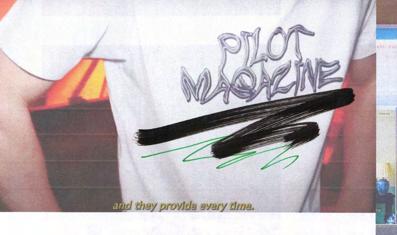




This brings us to our current endeavour — a collaborative project with eight vibrant youth collectives. This magazine is not just a showcase; it’s a testament to the art of doing it right.
The right community builds credibility, raises awareness, and drives tangible results. This project aims to demonstrate why community matters and how to navigate this complex landscape successfully. Yes, it’s not always easy. But armed with first-hand knowledge, we stand ready to guide you through the complexities and nuances.
Last but not least, I want to acknowledge the team behind the project. It’s very easy within our frantic environments to default to an easy, well rehearsed execution rather than challenging the format, justifying the ‘why’ to stakeholders and taking on the responsibility of doing it well. But it’s been thrilling to watch, and their dedication, passion, and belief have been infectious and, in the end, created something far more distinctive.
So, if community engagement is a desire for your business that you haven’t tackled before, or if you’re looking to refine your approach, consider this an invitation. Reach out, and let’s start a conversation. Here’s to the exciting possibilities that lie ahead.

Seed is a creative agency connecting brands with youth audiences globally. Headquartered in London but operating worldwide, we deliver campaigns from hubs in LA, Paris and Sydney.
We keep culture and community at the core of everything we do. Our campaigns are grounded in audience insight and community access, enabling us to create awareness, build affinity and drive acquisition for brands with hard-to-reach youth audiences on campus, in culture and beyond.
This means that we don’t just craft campaigns for the attention of an audience, but work collaboratively with them to build lasting relationships. So whether it’s creative collaboration, stress-testing concepts or activating in partnership with them, we invite the audience, and the creators who inspire them, to become part of every idea. We ultimately give the audience the power to say what they want and what matters to them whilst building brand experiences, creator collaborations, content and community engagement campaigns that truly resonate with them.
This approach to crafting audience-first marketing campaigns means that we find the spaces where audiences and brands benefit each other and co-create, to empower ideas, community, and conversation.
We get youth culture.
COMMUNITY
We get the power of our community.
CO-CREATE
We co-author campaigns.
CONVERT
We build demand, drive conversion and spark long-term brand relationships.

Now in its fourth edition, What Matters To Us is our proprietary insight and audience-first platform, ruled by the community we create for. It’s a platform for our hyper-engaged community to share their thoughts, views and opinions, allowing us to ask them anything and everything, ensuring that we have “of-themoment” perspectives to form and craft our campaigns as they’re taking shape, rather than as an afterthought.
While generational observations hold crucial value, shaping campaigns defined by subcultural and attitudinal nuance is how brands forge credibility and establish genuine long-term relationships with communities.


INTRODUCING CULTIVATING COMMUNITIES: EIGHT COLLECTIVES, ONE COLLABORATIVE PROJECT
FROM BARE NECESSITY TO BUZZWORD:
THE RISE OF COMMUNITIES IN THE 2020S
COMMUNITY DEFINED BY GEN Z
MEET BUGEISHA CLUB
MEET EOTT
GET THE INSIGHTS: CURIOSITY, EXPERIMENTATION AND PLAY
MEET HELLS BELLS FC
MEET PILOT MAGAZINE
GET THE INSIGHTS: AUTHENTICITY (AS WE KNEW IT) IS DEAD
MEET BLACK GIRL GAMERS
MEET DR3
GET THE INSIGHTS: INCLUSIVITY IS OVERRATED
MEET HELLAA MELANIN
MEET PENG FEMME JAM

GET THE INSIGHTS: THE IMPERATIVE OF THIRD SPACES: NURTURING COMMUNITY IN A LANDSCAPE OF SCARCITY
WHAT DOES IT MEAN FOR BRANDS?
THE COMMUNITY PARTNERSHIP PLAYBOOK: WHY START NOW AND HOW TO SUCCEED
CAST AND CREDITS









Seed was born from the power of community. In the 10+ years we’ve been working with young people, we’ve had a point of view on how to form, integrate, and partner with collectives across the globe. In this time, however, the landscape has changed massively and the demand for community-focussed campaigns has skyrocketed. This is due, in part, to the pandemic (apologies in advance, it forms part of the story) but also, more cheerfully, to the explosion of youth-run collectives.
What Matters To Us is our on-going, next-generation research and insights platform (try saying that three times). This year, we wanted to do a deep dive into community and what that means today. Rather than peeking in from the outside, we decided to go directly to the changemakers themselves, handing the mic to the inspiring young people creating and leading their own communities.
So, you might’ve guessed it, this isn’t your typical demographic study. But why not – given young people are rewriting the narrative in so many ways? We decided to take everything we’ve learned about working with Gen Z and put that into practice. Our intention was that by going a different route, it would ultimately lead us to a wealth of insights into their values and behaviours; that traditional research formats might bypass. Spoiler alert: it did.
We found eight collectives from across the UK, covering a range of passions and purposes and representing a broad spectrum of young people. The goal was to collaboratively create a zine and short film that would celebrate their stories, explore the challenges they face, and speak to the legacy they hope to leave behind.
In the spirit of a new approach, we pulled together three rules to keep us honest post-kickoff:
• Investment of both time and money: We wanted this to be more than a transactional exchange. We decided to give each community access to our expertise, connect them with the right people, and help them with their goals.
• Co-creation: We felt all our collectives should have ownership over the project and see themselves reflected. We therefore gave them free reign to tell their stories in a way that felt authentic to them and, by extension, their generation.
• Shut up and listen: We decided to let go of assumptions and encouraged the collectives to tell us how it is. Our main aim was to give them a voice and to be led by what they said.
With all this in mind, we launched the project by hosting an initial Immersion Session, where we brought the communities together to set the mood and define the brief. We set up a comms channel to share updates and exchange ideas, and checked in with them throughout. We scheduled interview sessions and captured reportage of the groups as they went about pulling together the zine and social content.
As an added bonus, we found that we ended up creating – you guessed it – a community. Not only between us and the collectives, but between the collectives themselves, with a depth of respect and collaboration that we’d never have achieved had we taken a more traditional approach.
Let’s get into it. Here’s “Cultivating Communities”, a What Matters To Us project.
“It’s this idea of power in numbers. It’s when we all come together I’ve realised that we’re not alone and there’s amazing things that we can do together. It’s about opening that door wider for everyone else to come with you and if one person’s on the up, it’s about bringing everyone else up with you as well.”
Mana, Bugeisha Club

“The main thing for me is acceptance of difference which then leads to self-expression and then to amazing art. Something good comes when you’re comfortable in your surroundings and able to express yourself without someone judging. It’s like a family.”
Sam, EOTT



“ I think it’s just a safe space. It’s a group of people that understand everything that you’re going through.”
Hells Bells FC

In recent years, a cultural fascination with the idea of community has emerged. It’s not just the warm and cosy meaning of the word that has intrigued people, but also the purposeful and organisational. Google Trends indicates a significant uptick in searches relating to community building and engagement – all pointing to a broader societal shift in focus.
With this rise in popularity, the term ‘community’ has undergone the inevitable process of buzzwordification. Whilst some brands are getting it right, the saturation of content and think pieces about communities has robbed the word of much of its meaning, and by association, power. The fact that there are articles floating around the web titled ‘How Brands Make Community More Than a Buzzword’ shows there’s a clear tension between community-washing and genuine engagement with this moment of change.
And yes, the irony isn’t lost on us that with this zine we are also adding our voice to the community choir. But the truth is plain to see – Gen Z is moving in droves to find their people and build communities that speak to them. Discord nearly doubled its growth in the past 3 years, from 300 million users in June 2020 to 563 million in January 2023. We really want to get to the bottom of why we’re seeing this rise of communities driven by youth for youth.
Boiled down to its essentials, the story of community is one of identity, beliefs, values, and interests, all mediated by the social, cultural and technological landscape. Charting the explosion that we see in communities today is to unpick the complex web of cultural, social and technological forces that influence how, when, why, and with whom we connect.
To tell this story in full is to defy the format of a zine (also: TLDR), so we’ve boiled it down to five core drivers that explain the rise in communities in Gen Z today.

The social internet has revolutionised how we connect, offering new and exciting opportunities for networking, learning, and entertainment. It’s the undisputed catalyst behind the recent

discovery and connection is huge. It feels as if we have access to everyone, everywhere, all the time. Whilst our algorithms follow us around the internet, homogenising the experience, they do have the power to open the door to new pockets of culture and, with that, new cohorts of people.

Nobody understands this duality between connection and isolation (and expression and commodification) quite like Gen Z. It’s a contract they’ve grown up with and now, partially, want out of. That’s why many of them are making a move to more private, hard to reach, and algo-free corners of the internet as well as forming IRL community connections.
Subscription-based platforms like Substack and Patreon have seen a sharp rise in interest amongst this age group, with more mainstream platforms like Instagram and X looking to offer similar, more intimate spaces by way of paid subscriber features. Elsewhere, platforms like Discord and Mastodon are providing spaces for creators and communities to interact more meaningfully, without ads.
For decades, large parts of the population have been denied representation, access, space, and investment from mainstream media and institutions. This coincides with a series of funding cuts that have targeted many of the spaces and institutions integral to marginalised communities. Paralleling this, a swell of right-wing and populist rhetoric has further threatened these spaces and reduced the number of places these groups can feel safe, be heard, and explore their identity.
Gen Z, as the most diverse and progressive generation yet, are demanding better. With the social internet, they finally have the tools to usher in that change themselves.
“WE JUST COULDN’T SEE A MAINSTREAM SPACE THAT REPRESENTED WHAT WE WANTED TO DO, SO IT FELT A BIT LIKEOKAY, WE’RE JUST GONNA TAKE IT INTO OUR OWN HANDS AND DO WHAT WE WANT ON OUR TERMS. I FEEL LIKE A LOT OF YOUTH COMMUNITIES DOING SIMILAR THINGS FEELS A BIT LIKE A RADICAL RESPONSE TO WHAT ISN’T AVAILABLE TO US.”
PENG FEMME JAM
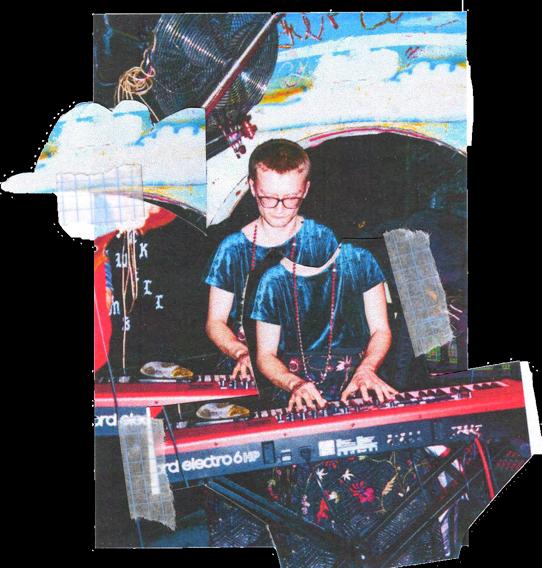
We’re living in a post-truth, post-modern, post-cringe culture. Many of the ideals we once lived by have lost their potency and relevance. This is felt particularly strongly by Gen Z, who grew up witnessing the fall of many of the institutions and narratives that society held as gospel.
Evidence of this consciousness is showing up across pop culture. In 2023, Barbie grappled with an existential crisis when Barbieland’s seemingly immutable status quo was upended overnight by horses, patriarchy, and, of course, Beach. In 2022’s Oscar hit, Everything, Everywhere, All At Once, Evelyn must literally save the multiverse from the destructive force of nihilism embodied by her Gen Z daughter.

Meanwhile on TikTok, we’re seeing Gen Z engaging with this crisis in a multitude of ways, from goblin mode to layflatism, corecore to NPCs, #simulation to #nihilism.
Growing up surrounded by the rubble of meaning, Gen Z has been given the responsibility of creating meaning for themselves. And they’re rising to the challenge by building a series of communities run by them, for them – spaces where shared values, purposes, and interests provide a sense of direction and belonging.


Powered by this collective existential crisis and supercharged by the social internet, Gen Z is ripping up the rule book when it comes to identity and self-expression.
They’re going after binaries in a big way – gone is the idea that you must choose between being someone who likes death metal and someone who likes Selling Sunset. Identity, for Gen Z, is something of an open house (ok, we’re done with the real estate metaphors). The 24-hour trend cycle further reflects this: it’s up to you if you only want to engage with a trend, aesthetic, or subculture for a week – no one is going to judge you.
And, of course, a dishonourable mention must go to the much-discussed panny d.
The pandemic robbed us of connection for 2-3 years, shining a spotlight on the importance of togetherness at a time when we were isolated more than ever before.
While it stripped us of IRL connection, it also accelerated the inevitable merging of our IRL and URL worlds. With no way to connect physically, we were forced to gather online.
This playful, patchwork approach to identity, also known as ‘operational cos-play’, allows Gen Z the space to try on new shards of identity (often in a tongue-in-cheek way) so they can see what fits.
This rapid and irreverent remixing of culture is sowing a rich tapestry of identity that Gen Z is exploring at the speed of social – bubbling up a breadth of micro-communities in its wake. Sure, we’re mixing our metaphors but, again, that’s no biggie for this generation.
Adding to this in the unexpected free time the lucky amongst us had to spare, a wave of self-reflection and self-exploration rippled across society. From learning to cook up bedroom beats to banana bread, this surplus of free time catalysed an explosion of new interests whilst recentring our values around connection, expression and exploration.

“COMMUNITY FOR ME IS FINDING THE SPACE INSIDE ALL OF THE CHAOS IN THE REST OF OUR LIVES. IT’S A SAFE BUBBLE WITHIN THE MADNESS.”
HELLS BELLS FC

MAINSTREAM SPACE THAT REPRESENTED WHAT WE WANTED TO DO, SO IT FELT A BIT LIKE OKAY, WE’RE JUST GONNA TAKE IT INTO OUR OWN HANDS AND DO WHAT WE WANT ON OUR TERMS.”
RYBES, PENG FEMME JAM



“I FEEL THAT IT’S THE SPACE WHERE YOU PUT EVERYTHING ASIDE AND YOU’RE JUST THERE FOR THE LOVE OF MUSIC...
Young people have always sought out communities that reflect their values. Historically, they’ve looked outside traditional established structures, finding kinship amongst communities they’ve not had access to, and exploring opportunities and scenes not opened up to them by their parents. From anti-establishment punks to a football team on the

“There were these movements, always. I think it’s a sense of anger or sadness or something to fight against – I feel like that often is something that drives younger people.”
Mana, Bugeisha ClubThere are many catalysts motivating this generation, whether that be the mental health crisis (73% admit to feeling alone either sometimes or always)*, a need to fill the gap left by the withdrawal of funding for youth services (estimated at a 70% decline in under a decade)**, or a desire for intimacy in the information age.
It’s not surprising that young people no longer define themselves by one “tribe” and instead align with multiple communities. This reflects the patchwork approach to identity we explored in the previous chapter but also the many imbalances they want to fix. It’s clear, from the conversations we have had, that young people are using communities to carve out their vision for the future – often acting in direct opposition to the mainstream. They’re also seeking meaning and connection with hope and curiosity. For us, three characteristics stand out.
*PsychologyToday
**YMCArevealedyouthservicesinEnglandandWaleshavesuffereda70%fundingcut, amountingtoanalmost1billiondeclinefrom2010-2019




Cheers IDLES, we couldn’t have put it better ourselves. For young people, putting joy, fun, and play at the heart of what they do makes them feel empowered. It’s the opposite of a capitalist mindset and gives a big middle finger to grind and hustle culture. It reclaims the narrative around minorities and subcultures, moving them from a place of marginalisation into a place of power.
“GRIND CULTURE IS SO EXCLUSIONARY, IT DOESN’T GIVE EVERYONE THEIR VOICE AND IT DOESN’T GIVE EVERYONE THEIR TIME.”ALANA,PILOTMAGAZINE
“[HELLAA MELANIN WAS] BORN OUT OF RESISTANCE AND RESISTING EVERYTHING THAT GOES AGAINST OUR HAPPINESS. WE SAW AN ABSENCE OF SELF-LOVE AND [THE BLACK COMMUNITY BEING IN THE] NEWS FOR NEGATIVE REASONS AND FOR PERSECUTION. SO FOR US, IT’S ABOUT THE IDEA OF BLACKNESS BEING MULTIFACETED. IT IS ABOUT CREATING A SAFE SPACE FOR OUR COMMUNITIES FOR PEOPLE TO FEEL CONNECTED. AND INVESTED IN AND [MOST IMPORTANTLY] CELEBRATED. AND FOR THOSE THINGS TO THRIVE IN ABUNDANCE.” NIAMH AND CHARON, HELLAA MELANIN
It’s all about making the world a better place, not making cash. For Gen Z, the power of the collective is about unlocking spaces that are supportive and fun.





The next gen has been raised knowing that the milestones reached by their parents will not exist for them in the same way. The idea of getting keys to a home purchased through hard work alone is something of a closed door for most young people. It’s created a growth mentality that borders on self-reliance – they’re looking to create different opportunities for themselves and are going after them with determination.

This soundslike empowerment, but it feelsmore like necessity. They’re frank and realistic. They see a problem and then look for the quickest and most straightforward solution – “it doesn’t exist, so I guess I’ll just do it myself”. They’ve been raised without a comfort blanket and, rightly or wrongly, it’s on them to fix things. So they get out there and do exactly that, redressing imbalances and creating the spaces they know they need.


The term ‘safe space’ came up repeatedly during the time we were working with the collectives. It means a huge amount to Gen Z and has several meanings:
• It’s representation – typically where there’s been a lack of spaces that speak to how they identify themselves
• It’s a chance to ‘find your people’. They’re looking to find joy with those who share common values and are motivated by a common purpose. Whilst the internet has enabled many of them to find one another virtually, they want to go further – they want real life connections that can turn into friendship.
• It’s support, reassurance and validation. They need to feel backed-up and valued to truly be themselves.

“It feels like our generation has surpassed the language that is provided for us to talk about [representation]. And we don’t want anyone to feel excluded. We have a sentiment that you have to use words to describe what the event is to people, but it always just culminates, and it’s the vibe in the room!”
Laura, Peng Femme Jam
“It’s like there is no part of me that is metering or having to consciously mask anything about the way I talk, I look, the way I sound, how short my hair is or how broad my shoulders are. [With Hells Bells], you don’t think about that. The community part of it is that you just let go of a lot of the other baggage that you carry around.”
Hells Bells FC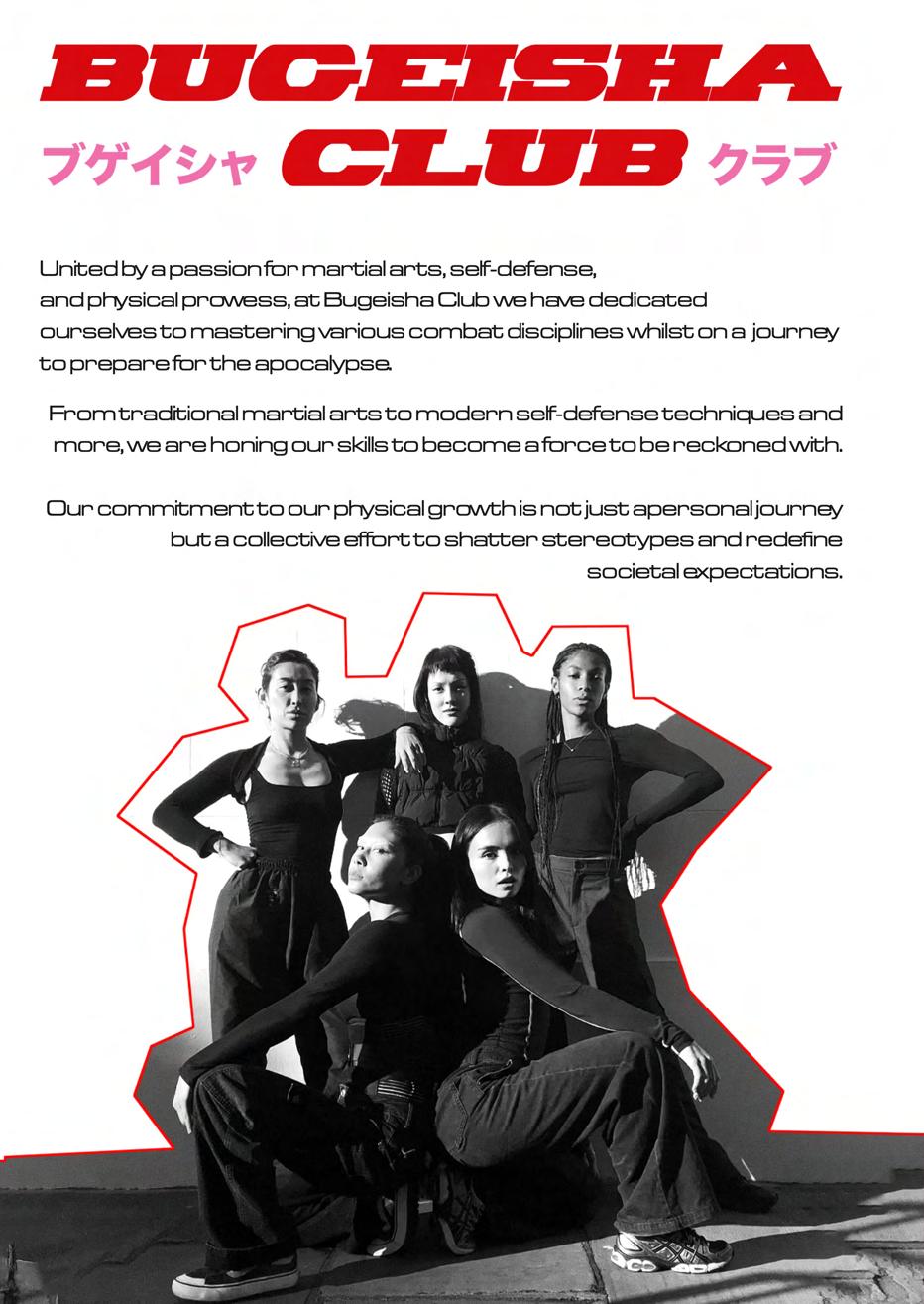


DESIGNED BY:



DESIGNED BY:




DESIGNED BY:


DESIGNED BY:



From doom scrolling to climate anxiety, worsening social inequalities to live-streamed atrocities, Gen Z is living in a state of permacrisis that only seems to be accelerating. This mood sits on a backdrop of permanent productivity where some young people are feeling compelled to carve out a 5 to 9 on top of their 9 to 5. It’s all takin’ and no givin’.
Anyone would be forgiven for a little daydreaming. Gen Z communities, however, are showing that dreaming isn’t simply an escape from reality but rather a powerful tool for reimaging what reality can be. As a generation tasked with the serious business of improving their circumstances, the importance of curiosity, experimentation and play can’t be understated.
“SHOWING A VERSION OF WHAT CAN EXIST IN THE WORLD. I THINK AT LEAST FOR ME THAT WAS, IN A SENSE, A DRIVING FORCE [TO STARTING BUGEISHA CLUB].”
MANA, BUGEISHA CLUB
Gen Z is uniquely embracing play and experimentation, not as a means to reach some polished, complete end, but rather as a radical end in and of itself.
“WE’VE HAD SOME FEEDBACK FROM PEOPLE SOMETIMES ABOUT NEEDING TO CONTROL THE ENVIRONMENT [AT THE JAMS] A LITTLE BIT MORE AND MAKE SURE IT HAS A CERTAIN OUTCOME. FOR US, IT’S CHOOSING BETWEEN THAT OR JUST STAYING TRUE TO ITS ACTUAL ESSENCE OF WHAT IT DOES WHICH IS CREATING JOY AND A SENSE OF ACCEPTANCE.”
RYBES, PENG FEMME JAM
The acceptance that this messier, more experimental, rough output can be just as powerful as something slick and perfect is crucial to
understanding the importance of play to Gen Z. This mindset creates room for young people to craft new identities, narratives and ways of connecting, often in contrast to the mainstream. They’re driven by ‘what ifs’, with curiosity helping them to find a way forward in a world that doesn’t always speak for them or, in some cases, has left them out entirely.
Growing up online, subjected and held to an idealised, picture-perfect life, Gen Z is, en masse, hitting back against #gridgoals, hustle culture and perfectly curated expressions of “authenticity.” They’re keen to end the manicured monotony of the “messy” photodump and usher in something more raw, unfiltered and uniquely them.
“PILOT STARTED SMALL AND WE PROBABLY WEREN’T EVEN THINKING ABOUT THE GRIND CULTURE AND BECAUSE WE HAVEN’T REALLY PLAYED INTO THAT, IT DOES, I THINK, GIVE MORE PEOPLE OPPORTUNITY AND SPACE TO BE THEIR ART AND BE THEIR ART WITHIN THEIR COMMUNITY.”
ALANA, PILOT
This way of putting it is so useful – it’s about being your art, not creating it. This generation values what they’re doing and how it makes them feel above the finished product: a kind of art as practice.
That said, we’re not out of the like-comment-and-subscribe woods just yet. The internet is the homeground of much of Gen Z’s experimentation and they still have to play by its rules to some extent. Yes, they’re investing more time in community-driven platforms such as Discord and Substack, but we can’t leave the big platforms out of the picture. Whilst platforms like TikTok are celebrated for encouraging experimentation, they operate on the exchange of posts in return for likes and follows. If the true spirit of experimentation is to have a go, just for the joy of trying, how experimental is the type of play that ultimately is judged by your followers?


As we’re learning with this audience, the answer lies somewhere in the middle ground – it’s all about nuance and tone. From shitposting to the proliferation of cores, Gen Z is navigating TikTok and IG in a subversive, playful and ironic way. They’re masters of self awareness and subtlety, creating a kind of meta-performance where they flirt with truthful experimentation whilst at the same time knowing full well it’s all a bit of a game. They enjoy mass platforms for what they are, saving more meaningful connection and play for smaller, community-orientated spaces, both on and offline. They’re keen to find places where nuance and curiosity are allowed, where they can make their own minds up via conversation and friendly debate rather than being presented with absolute truths.

“RATHER THAN CONSTANTLY YAPPING, “I KNOW THIS ANSWER IS TRUE”, “I KNOW THAT ANSWER IS TRUE” IT’S OKAY TO ASK QUESTIONS AND NOT KNOW THE ANSWER AND KIND OF JUST BE OPEN TO EXPLORING...
I THINK A BETTER INTERNET TO ME [IS] JUST LIKE A LITTLE CALMER AND [WHERE YOU CAN] JUST ASK QUESTIONS AND HAVE A DISCUSSION INSTEAD OF BEING SO DESPERATE FOR THE TRUTH OR AN ANSWER… BECAUSE THEY’RE NOT ALWAYS GONNA BE THERE.”
ALANA, PILOT
Don’t worry about colouring outside the lines – your audience isn’t. Whether it’s bucking a trend or breaking the rule, embrace a kind of creativity that sometimes puts the means above the ends and champions the true spirit of playfulness. It might feel scary, but it’ll be exciting to Gen Z.
Make room in your campaigns for your audience to experiment themselves. Whether online or IRL, identify areas of curiosity for Gen Z and then give them the tools to play and experiment.
Consider what reaching Gen Z in more private spaces might look like for your brand – The migration into more closed spaces is a trend that’s not expected to slow. It’s essential for brands to work out how to do this well. How can you add value here and support their play?


We are Hells Bells. A ragtag bunch of misfits and fit-bits playing grassroots football in East London. We welcome all women, non-binary finery, and other trans folk across the gender spectrum.
We offer weekly football training to our members, plus regular opportunities to play competitive and noncompetitive 5-a-side and 11-a-side football. We pride ourselves on our warm and welcoming vibes, oh – and did we mention our hot as hell kits?
Our priority when we founded the club was providing a space for people of all genders, who had been traditionally excluded from football, to enjoy this glorious sport together. The club is run by a non-hierarchical committee who are also players on the pitch, allowing us to create a space on our terms that benefits and supports us in the ways that we need.
You can’t be what you can’t see, so Hells Bells are building a powerful space in grassroots football where no one gets excluded (actually, we do exclude cis men... sorry not sorry, you’ve got plenty of spaces and places to play).






“I’ve never been able to be this open about my gender identity with any group of people and it’s been so beneficial and reaffirming for me.”
“I love the Bells because it’s a community, an authentic community as well.”

“Our team cares deeply for one another, we support each other through highs and lows and we have a massive amount of fun along the way... Hells Bells, and in particular the creation of Clubs United, has taught me the importance of fierce activism and allyship. It’s been a profound and unquantifiably positive addition to my life to see trans joy played out on the pitch every week.”
DESIGNED BY:






DESIGNED BY:
Storming down the wings, the wind in your buzz cut, sweat under your shin guards, surrounded by people who see you for who you are: it’s a Hells Bells way of life. A trans-inclusive space to kick a ball about has been our vibe from the off. But finding a league that welcomed all our players hasn’t always been easy...
After 6 months training, we entered our first beginners league: a fivea-side open to women and non-binary players. Excited, we took to the pitch. But it wasn’t the joyful, light-hearted grassroots footy experience we were expecting. It was totally tainted when the cis man running the league told one of our non-binary players they were a danger to women on the pitch and, unless they provided blood test results detailing their hormone levels, they were not welcome in this (women and non binary) league. A blood test. To play beginners football. Are you joking!?
Absolutely not.
There was indignant uproar from the team and we rallied to take action. We researched the FA’s archaic rules that meant one of our players could be banned from playing, we reached out to other grassroots teams about boycotting the league,
(BECAUSE IF ONE OF US CAN’T PLAY, NONE OF US CAN PLAY)
and finally, we thought, ‘if there’s not a league we can all play in, fuck it, let’s create it ourselves!’. So we did.
The Clubs United League, run by our original founder, Hannah Thornley, offers totally trans-inclusive, safe, and fun grassroots football. It’s now in its 7th season, has expanded to multiple pitches, dozens of teams, hundreds of players, and not once have we banned someone from playing because they don’t provide us with blood tests.
That’s what makes Hells Bells: football for all.

We are a community, run by the community: we book our own sports halls, lug our equipment to and from training, and take it in turns to wash the bibs. We have a reputation for being resourceful, open, diligent, and kind, with a beautiful cohort of players from across the gender spectrum. What matters most to us is that everyone can play, and our team’s committee work, unpaid, to make sure that happens.
But we are slowly getting a little sick of grafting to make everything possible ourselves. We’ve lost training space because a cis boy’s team can cover the 12-week upfront pitch hire where we can’t. We’ve missed out on other leagues because we can’t pay the £500 fees in advance. Turns out, late-stage capitalism sticks its ugly head into grassroots queer football too.
Part of making our club accessible means offering free or discounted training to those who need it, and we can’t front large costs like block booking a pitch. We’d love a home though. An astro pitch to train on each week. So if you can help, give us a shout and we’ll give you a rainbow tick for supporting the queer community all year round, not just when you put the pridelogo.jpeg on your socials in June – how about that?



DESIGNED BY:





DESIGNED BY:






In a year dominated by dupes, deepfakes, AI, and psyops, Merriam-Webster’s chose “authentic” as the word of the year. 2023 saw “a kind of crisis of authenticity,” says editor-at-large, Peter Sokolowski, adding, “what we realise is that when we question authenticity, we value it even more.”
You wouldn’t be alone in feeling a little deja-vu. Yes, popular vocabulary can fade then come back around, but has the popularity of this word ever really gone away? ‘Authenticity’ was millennial marketing 101, a North Star for agencies and brands alike. So, let’s examine the word in 2024 and explore why it’s still gracing the zeitgeist’s lofty heights.
The definitions behind “authentic” covers a lot of linguistic ground. It pinballs between denoting what’s ‘real’ to what’s done the proper way and slides between what’s true to you and subjective, to what is based on fact and fact alone. It’s ironic, really, that the word ‘authentic’ has so many definitions that it starts to present as inconsistent and, by extension, inauthentic. We’ll come back to irony later…


As we plot the semantic territory that authenticity covers, it’s no wonder that the word has come to be such a hot commodity. Each of these territories is seemingly undergoing a period of challenge and change – identity, truth, and culture are all in flux.
A growing awareness of the performative style of ‘authenticity’ popularised in the 2020s by celebs and creators (not to mention the flurry of AI, CGI, and psyop content) is challenging our relationship with what is real, true, and authentic. Is the pope really that steezy? Did this student really write this essay? Can I believe this influencer? How did Maybelline ever get *that* installation greenlit by TFL?! (Yes, we know, it’s fake.)
Pablo Xavier, MidjourneyOur means of cultural production are definitely partly responsible, but there’s also the fact that cultural containers themselves are being untethered from their original contexts. It’s leading to both serious and silly consequences, summed up perfectly by memes like this…
There’s plenty of food for thought (as well as food for feed) in this meme. This unpegging of authenticity that we’re seeing here is accelerating the evolution of concepts that historically have moved at a glacial pace –what it means to be a woman, a man, to be British, and so on…
We’re left with an environment where we’re surrounded by, and desensitised to, fakeness. At the same time as this, the truths we once understood to be unshakeable are dissolving. You can see why finding consensus around the very presence of authenticity is tricky to achieve and arguably not worth pursuing.
Simply put, authenticity has typically relied upon mutual agreement and black and white distinctions – in a world that is greyer and more plural than ever, authenticity as we knew it has died.



Authenticity’s writing on the wall feed?
Gen Z’s signature meta-ironic humour, spiritualism and weirdcore (to name but a few).
“YOU HAVE TO IMAGINE THE APOCALYPSE, THERE’S NO WAY OF US KNOWING WHAT IT COULD BE LIKE, SO I THINK IN A CREATIVE ASPECT, IT ENABLES US TO CREATE THIS OTHER WORLD FOR OURSELVES.”
MANA, BUGEISHA






@samanthaquick_
In our upside-down world, where truth is an uneasy concept, fantasy, multiplicity, and weirdness are safe havens where we’re free to explore, dream, and revel in contradictions.
It’s likely that recently you’ve seen a TikTok or two where you weren’t really sure if it was a joke or not… enter meta-irony. Ah meta-irony, what the world really needed was for something as slippery as irony to have the word ‘meta’ plonked before it. Meta-irony deliberately obfuscates whether or not a piece of content or creativity is ironic or not. It’s a complex blend of irony and sincerity that challenges notions of authenticity by suggesting that something could be both a joke and not a joke.
Elsewhere online, pockets of Gen Z are leaning into distinctly self-aware, fantastical modes that push objective reality into something more dreamlike. We see this in nu-spiritualism’s clash of technology with the occult and the divine. Or take weirdcore’s blend of 90s – 00s lowpoly, digital aesthetics with evocative text and imagery that stir up feelings of both dread and comfort.
We’re already noticing brands run with this trend for dream-like experiences and the results are plain to see. Take Moncler – for their Genius show, they partnered with an eclectic mix of creative brains to build a powerful multiverse of worlds. The likes of Pharrell and Rick Owens collided natural environments with the hyper-technical and theatrical. As opposed to an overarching narrator, the brand acted as a springboard encouraging audiences to step away from experiencing one fixed branded reality. They were invited to enter into the different imaginations of the creative partners and to just feel.
Alana from Pilot Mag alludes that authenticity has often been used by brands as a cloaking device, a means of disappearing into the background and letting the clout of communities pay dividends. But ultimately, the jig is up, Gen Z are all too aware that they’re being sold to, but don’t care half as much as you may think. They desire collaborations that bring about something new, exciting, and challenging.

“I THINK THERE’S THIS OBSESSION WITH AUTHENTICITY. BRANDS REALLY WANT [IT], WHEN THEY’RE WORKING WITH COMMUNITIES, [THAT]
THEY’RE ALMOST GOING TOO FAR. WHEREAS, ACTUALLY PEOPLE KNOW WHEN THEY’RE BEING SOLD TO. [BRANDS FORGET] THAT IT’S ACTUALLY OKAY TO TRY AND SELL ME SOMETHING. IT’S ABOUT FINDING THAT BALANCE BETWEEN SHOWING
THAT THEY KNOW THIS COMMUNITY, BUT NOT PRETENDING THEY’RE NOT HERE.”ALANA , PILOT MAG


@puncrastination via @no1fan15

So ultimately, authenticity isn’t dead – it just has a new face. Authenticity today is less concerned with reflecting true, objective reality and is more concerned with truth of feeling.
As Shygirl puts it on her latest record, “who wants to be real? I want it fake b*tch”.
Authentically capturing communities is great, but this is expected not applauded. Young people are looking for brands to go further. They’re after signs of genuine co-creation, where something new has arrived as a result of collaboration. When working with communities that have built worlds around themselves, ask yourself how you can grow and deepen their mythologies.
Your brand history doesn’t have to be a dry slide in a Keynote, or a joined-up piece of prose. It can instead be fertile ground for bringing your brand to life through rich storytelling. Pick something about yourselves and lean in hard on it – think Barbie’s DreamHouse hitting AirBnB this year, or McDonalds letting Grimace take over their X (Twitter) this summer.
It can feel like a big jump to dive headfirst into this fantastical mode of brand building when you have a long-established identity and narrative. However, as we’ve already covered, this isn’t how Gen Z approaches identity. Try to think on their terms and embrace your everything – get experimental and explore your unique shards. It’s likely they’ll add up to a larger whole.





Since its inception in 2015, Black Girl Gamers (BGG) has transcended its modest origins as a Facebook group, blossoming into a dynamic collective that now boasts over 10,000 Black Women from across the globe. This vibrant community is bound together not only by a shared passion for gaming but also by a collective determination to wield influence and impact within the industry to make it more inclusive. What began as a close-knit circle of like-minded people has organically evolved into a community-driven enterprise, marking BGG as a prominent player in the gaming landscape.
As a catalyst for change, BGG has risen to become a powerful force within the gaming sphere, actively collaborating with renowned brands to revolutionize the industry from within. Through strategic partnerships with both endemic and non-endemic entities —
including industry giants like Google, Playstation, Facebook, Netflix, and others — BGG has positioned itself as a multifaceted entity, spanning content creation, events, education, consultation, and talent development.
What sets BGG apart is its unwavering commitment to amplifying the influence, representation, equity, and overall experience of Black Women in gaming. This community is not just a collective of gamers; it’s a transformative movement that is actively shaping the future of the gaming industry. With a focus that extends beyond mere participation, BGG stands as a testament to the potential for positive change when like-minded individuals come together, uniting under a shared vision for inclusivity and impact in the gaming world.

DESIGNED BY:





For nearly a decade, our journey at Black Girl Gamers has been driven by a commitment to creating a lasting legacy and impactful change. We forged a space for Black Women long before the industry acknowledged our significance in their development and marketing processes. Through nearly ten years, we’ve utilised our social media platforms and grassroots efforts to establish and maintain a safe haven, shielding Black Women from the misogynoir prevalent in the gaming industry.
Our influence manifested in substantial ways, with one pivotal period in 2017-2018 compelling the industry to reassess the representation of playable Black Women characters. By vocally calling out self-congratulatory diversity claims that excluded Black Women characters and players, our tweets and social discourse directly impacted industry decision-making, contributing to a more diverse gaming landscape.
Pioneering unique perspectives on the gaming landscape, we’ve orchestrated groundbreaking activations that redefine industry standards. In 2022, our partnership with Benefit Cosmetics led to the creation of the first allBlack Women Apex Legends livestreamed tournaments, garnering over 11,000 live views.
Our most recent campaign with X (Twitter) and Xbox, saw our proprietary game show content series, Play or Pass (where we put members head to head to test their gaming knowledge) yielding over 26 million impressions.
At Black Girl Gamers, we embrace impact work, refusing to accept the industry’s pre-existing conditions. Our collaborations with brands prioritise meeting expectations while effecting change. We educate partners on the gaming landscape, differentiating between vanity metrics and genuine impact, showcasing how both can align for mutual benefit.
Our Black Girl Gamers Online Summit in 2020, sponsored by Twitch, exemplified our commitment to amplifying Black voices in gaming. With 2000-3000 live viewers, the event not only raised awareness but also led to job opportunities within the industry.
As we evolved from a community to a recognised brand, AAA studios sought our consultation expertise. Our recent work with Square Enix on Forspoken marked a public venture into this domain, contributing authentically and significantly to the game’s success.
All these achievements stem from our fundamental accomplishment: existing as a collective focused on empowering Black Women in an industry that initially ignored and excluded us. By consistently showing up, we’ve compelled the industry to not only notice but to actively listen and evolve.
DESIGNED BY:





DR3 Sounds, born from the shared vision of three friends at university, has evolved into a vibrant music label and events group that pulses with the heartbeat of Manchester’s dynamic music scene. Our journey began as a humble aspiration to create a platform where students and music enthusiasts could not only be heard but celebrated. Over the span of two exhilarating years, DR3 Sounds has organically blossomed into a recognised name in the city, igniting a sonic revolution that resonates with the rhythm of passion.
From intimate shows to electrifying events, we’ve transformed Manchester’s nightlife into a tapestry of beats and melodies, offering a haven for music lovers to dance freely and express their love for the art.
DR3 Sounds stands not just as a label but as a testament to the power of shared dreams and collective energy. We’ve cultivated a community where diversity thrives, and every beat tells a unique story.
As we look towards the future, our hearts swell with excitement. The journey so far has been a testament to the unwavering spirit of our team and the boundless enthusiasm of our supporters. We envision DR3 Sounds as more than just a name; it’s a movement that will continue to amplify the voices of emerging artists, foster creativity, and create unforgettable experiences. The future is bright, the music is loud, and DR3 Sounds is poised to be a guiding force in Manchester’s musical landscape for years to come.








DESIGNED BY:



DESIGNED BY:


As DR3 Sounds charts its course into the future, we envision a legacy that transcends the beats and melodies, leaving an indelible mark on the next generation of music enthusiasts. Our collective dream is to be remembered not just as a music label and events group but as architects of a cultural movement that redefined the landscape of Manchester’s music scene. At the heart of our aspirations lies a commitment to creating a legacy built on three foundational pillars: community engagement, breaking down barriers in the industry, and fostering inclusivity.
First and foremost, DR3 Sounds is driven by a profound commitment to giving back to the community that has been our heartbeat. Our journey began with the goal of providing a platform for emerging artists and music lovers alike, and as we look forward, we aim to deepen our impact. We aspire to nurture the next generation of talent, offering them not just a stage but a supportive ecosystem where creativity can flourish. Through collaborations, workshops, and community initiatives, we seek to be catalysts for positive change, ensuring that the music we love becomes a force for empowerment and unity.
In an industry often marked by gatekeeping and saturation, DR3 Sounds stands as a counterpoint, dedicated to dismantling barriers and democratising access. We want to be remembered as pioneers who disrupted the status quo, opening doors for those who have faced systemic challenges in expressing their artistic voices. By providing a platform free from unnecessary constraints, we hope to inspire a new wave of musicians who embrace authenticity and diversity, ultimately reshaping the narrative of the music industry.
Central to our legacy is the ethos of inclusivity, irrespective of one’s beliefs or background. DR3 Sounds seeks to create an environment where everyone feels welcome, a space where the universal language of music transcends boundaries. As we look ahead, we aspire to amplify this message of inclusivity, promoting a culture that celebrates differences and unites people through their shared love for music.
In the grand tapestry of time, we aim for DR3 Sounds to be remembered not only for the shows that made hearts pound and feet move but for the positive impact we had on artists, the community, and the industry at large. Our legacy is one of empowerment, breaking down barriers, and fostering a sense of belonging in a world where music is the common thread that binds us all.

“EVERYWHERE I GO IN LONDON. I FEEL LIKE THE MINORITY, UNLESS I SEEK A SPACE OUT THAT IS DESIGNED FOR US. AND SO THEN THAT FEELING THAT WHEN YOU ARE AROUND PEOPLE THAT LOOK LIKE YOU AND THAT THERE’S NOT JUDGEMENT BASED ON WHAT YOU LOOK LIKE, YOU JUST AUTOMATICALLY FEEL EMPOWERED AND SAFE.”
HELLAA MELANINThis desire for empowerment and safety led to the creation of at least six of our eight communities across various subcultures, minorities, and demographics. An explosion of exclusive groups and communities has come about in reaction to the absence of an inclusive landscape. There’s a clear need for spaces where individuals can be themselves, without judgement. But this raises a crucial question: do exclusive spaces create division?
What’s happened in women’s football is a great way into tackling this question (sorry). The collective conversation surrounding the Women’s World Cup and its accompanying ad campaigns unveiled a pervasive theme – the need to justify the existence of women’s football to traditional male fans. But as time has moved on, the conversation has changed. After all, why focus on justification when women’s football has fundamentally reshaped the game?
The Women’s World Cup, beyond mere attempts to persuade traditional fans, has created a whole new ecosystem of fans. It has become a transformative force, attracting individuals who were previously indifferent to the sport. This phenomenon speaks volumes about the power of creating exclusive spaces within the broader context of representation.
The shift is not about convincing sceptics but about acknowledging the creation of a space that resonates with a new audience. Women’s football has broken away from the toxicity of the male-dominated game, creating room for those who felt unrepresented or unwelcome. This is as true on the pitch as off. It has become a symbol of inclusivity in its truest sense, demonstrating that exclusive spaces can be catalysts for positive change.
Hells Bells emphasises that creating a space for those at a disadvantage is not the same as being exclusionary. The distinction lies in the purpose – positive representation and redressing the balance. The intent is not to perpetuate exclusion but to provide a haven for those historically underrepresented, granting them a platform to thrive and reclaim their narrative.
Across the UK (and beyond), exclusive spaces are weaving a narrative of empowerment, resilience, and positive change. They challenge the notion that exclusivity is inherently exclusionary, instead proving that it can be a tool for dismantling systemic barriers and fostering inclusivity.





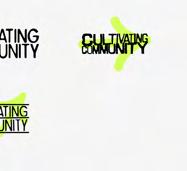

Jay-Ann from Black Girl Gamers talked to us about how they ensured they were creating a space that empowered all their members, “That’s the first thing – always have your rules on conduct. You can change them over time, but always have something from the basic level that your members of the collective, your employees or whoever’s working on it need to abide by.”
Hells Bells echoes this sentiment, emphasising the importance of protecting the space they’ve created: “We pride ourselves on being open to anyone [but] we have to protect the space that we’ve created.” It’s a mindset, not a definition. These exclusive spaces, armed with a code of conduct, serve as incubators for discovery, allowing individuals to express their identity without fear of judgement.
In the evolving landscape of collectives, from football teams to gamers, exclusivity signals a departure from the status quo. These collectives are not only creating new spaces for people who need and deserve them, but they’re also having a halo effect elsewhere. Again, women’s football is a great example of how an exclusive space has inspired change outside of its cocoon. It has raised the profile of women’s sport more widely, with an explosion of interest (not to mention TV coverage and investment) in netball, rugby, and cricket. Broader still, there’s more interest in understanding women’s bodies in relation to sport and training, from ACLs to periods and, with it, an appetite to fund research into women’s health – all of which will no doubt have an impact on other communities, way beyond the pitch or stadium.
That’s the power of exclusive communities – they protect and propel their members but also have the potential to create positive change outside of their immediate spheres and pave the way for a more inclusive future. With this groundswell of exclusive communities, the landscape starts to shift into one that has spaces for everyone. Instead of walls that divide, there are bridges to connect, fostering an overall sense of belonging and strength.
• Approach communities with an understanding of their values and intention: It’s about aligning with what they stand for, avoiding attempts to steer their narratives. Self-awareness is key, ensuring brand values resonate with the collective’s purpose.
• Champion minorities beyond special occasions: Authentic support for minorities extends beyond designated months or days. Consistent backing demonstrates a commitment to the collective’s cause, building trust and credibility. Brands should be long-term advocates, not occasional participants.
• Target underserved audiences for maximum impact: Rather than focusing on “difficult to change” psychographics, brands should explore the power of targeting underserved audiences. The real influence lies in addressing the needs of communities often overlooked. Just like in politics, it’s the swing voters that change the game.

“We invest in the wellbeing of the Black community by creating community.”


Hellaa Melanin started as a small ‘passion project’ straight out of university, and initially we never dreamed it could be something as community rich as it currently is. We plan for it to only get bigger and better.
The project was born out of resistance and frustration at the homogenised negative view of Blackness in our society. However resistance doesn’t always need to mean that we’re angry or we’re complaining. It’s also us saying that we’re going to enjoy our existence in abundance. That’s what we’ve always been about, creating spaces where we can thrive and enjoy ourselves; spaces where we can connect and build relationships within our community, and spaces that celebrate Blackness wholeheartedly.
Speed Mates is Hellaa Melanin’s largest event; a night of games, music and prizes to connect our community. We created it in order to allow for connection and relationship building at a time where community was ever important. We host these events every 6 weeks and want to be recognised as a space people can go to, to find community and connection with like-minded people.
A key point in regards to creating spaces is about taking up spaces. We want to see our community represented and thriving in all areas, because we deserve to be there. This has been a goal of Hellaa Melanin for as long as we can remember, and we’re taking the steps to strengthen community and branch out to hosting different kinds of events through collaboration.



DESIGNED BY:



DESIGNED BY:



and beyond

The future of Hellaa Melanin is something we’re truly excited about. At the moment, we envision endless collaboration; we’d like to work with collectives with similar communities and unite in different spaces. Previously, we’ve worked with running club LDN Select and Psycle to entice our communities to tap into fitness and wellbeing. We’ve reached out to communities who are interested in skiing, Black group travel and day parties to focus on other ways we can enjoy ourselves. We’re in the stages of planning our very own Wellness Day, where we host a workshop, networking moment and element of fitness/wellbeing. We truly believe community is at the core of nourishing mental wellbeing, and that’s why we aim to diversify our events.
“We create ee ates in or er to allow for connection an relationshi buil ing at a time where community was ever im ortant.”
A long-term goal would be to have Hellaa Melanin events in different cities, different countries and ultimately a legacy of community wherever you go. We aspire for Hellaa Melanin to be a collective that grows internationally and is recognised as a resource for Black people who are searching for community across the world.





DESIGNED BY:

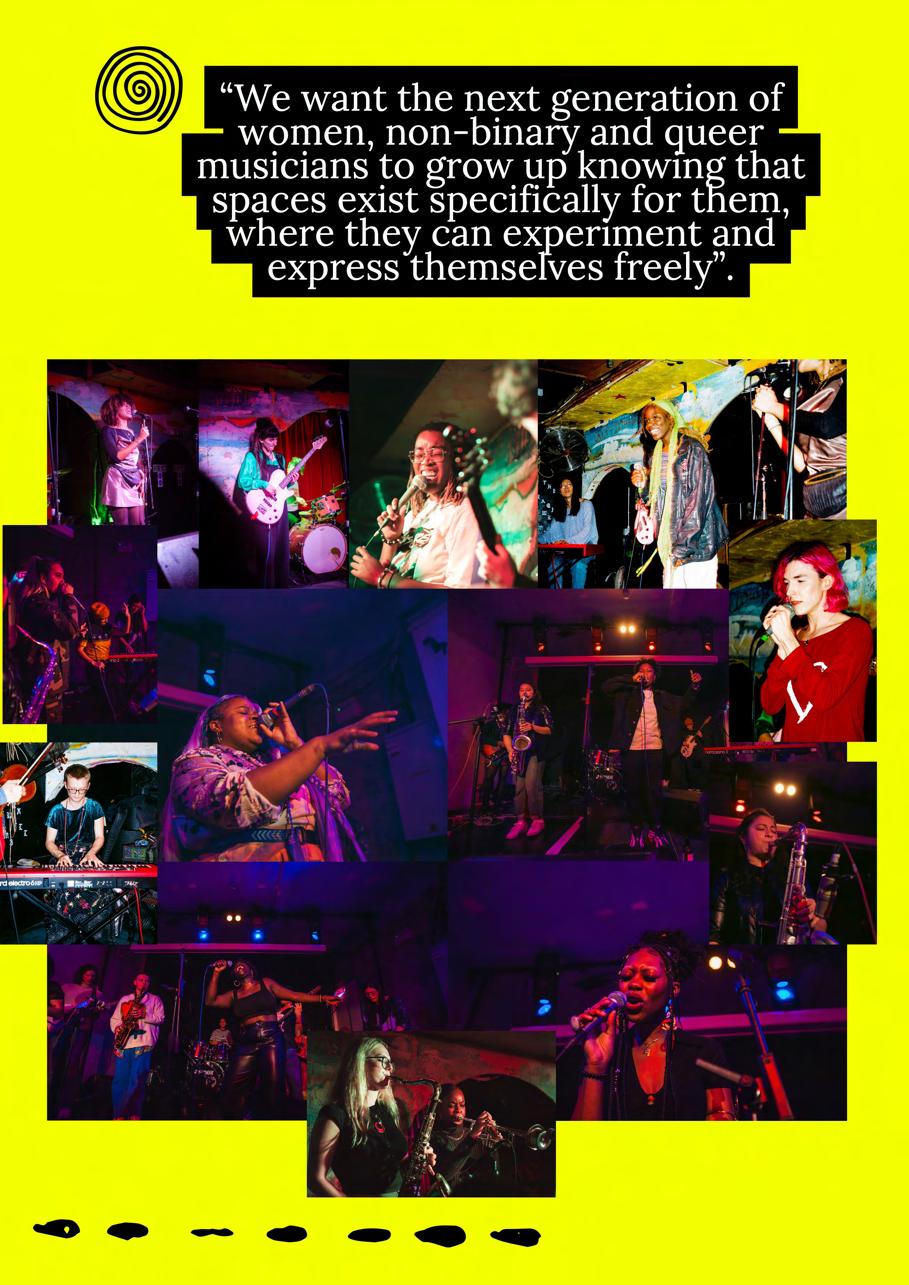

DESIGNED BY:




We’ve talked a lot about the importance of spaces, whether safe, exclusive or inclusive – physical spaces and their vital role in the development and maintenance of communities.
What we term “third places” is essentially a contemporary expression for something that has been intrinsic to the human experience – spaces beyond home (first places) and work (second places) where communities can relax and flourish. Coined by US sociologist Ray Oldenburg in 1989, the concept of the “third place” encapsulates the essence of spaces that are vital for fostering community, diversity and creativity.
As it stands, these spaces are in high demand – there are less of them in existence and there are more people than ever seeking them out. This is hitting young people particularly hard. Third places have always been essential, but in the current climate they’re critical catalysts for collective growth. Publicly funded community centres and traditional grassroots venues face seemingly insurmountable challenges. In the face of this, however, a quiet revolution is unfolding.


The chipping away at youth services and third places over the past decade is creating a void which has been expedited by the pandemic. Jay-Ann from Black Girl Gamers reflects on the impact of this, stating: “I know from growing up, youth clubs were shut down by the government, creating a huge gap, especially in diverse places like East London.” Youth clubs helped her create connections and participate in activities she wasn’t exposed to at home or in school, and their removal would have had a big impact on her and her peers.
For many grassroots communities, securing space for activities is a persistent challenge. The odds are stacked against them, particularly for those representing minorities. The competition for resources often favours established entities over innovative and inclusive initiatives. A trans football team, for instance, will find it challenging to secure practice pitches against more conventional cis male counterparts, mainly due to the comparative investment, sponsorship and existing opportunities needed for them to thrive. There’s also the infrastructure of existing third places to consider.
Many surviving community spaces weren’t originally built with true accessibility in mind. Without access to funding, these spaces aren’t able to revamp, making viable square footage even more scarce.





Amid these challenges, innovative solutions are emerging. Communities are taking matters into their own hands, creating third places that address the gaps in existing infrastructure. Beau Beaus Cafe in East London – spearheaded by Slawn, a community-driven artist and activist – stands as a shining example. Hosting regular community slots, from Chess Club to Art Club, Beau Beaus exudes a spirit of play and collaboration rather than focusing on predetermined outcomes.
In addition to philanthropic efforts, some third places have been set up as commercial projects. An example of this is Kindred in West London offering spaces for meetings, work, and special events. Ventures such as these seek to balance commercial viability with community access and with that comes a nuanced challenge – sustaining the bottom line alongside keeping the doors open to diverse communities.
In a time of soaring living costs and community funding struggles, the affordability of well-meaning spaces like Kindred might inadvertently limit access, creating a divide between those who can afford it and those who cannot. In addition, these newer buildings, built with accessibility in mind, are in huge demand by dint of the fact that, from an architectural point of view, they are inclusive and can cater for different communities’ needs. The weighing up of commercial viability with inclusivity becomes a crucial consideration, raising questions about how accessible third places are and, by extension, how far they can go to redress imbalances.



Peng Femme Jam talked to us about how vital third places are: “I think it just gives a different outlet to enjoy artistic expressions. It’s outside the conventional space, and they’re just a lot more intimate, allowing you to build a different connection.”
The struggle for funding and venues facing collectives like Peng Femme Jam highlights systemic issues. Traditional funders often focus on clear outcomes, overlooking the benefits of nontraditional initiatives. Third places become essential to challenging these perceptions, offering opportunities to those sidelined by, or priced out of, mainstream institutions.
Third places, by design, level the playing field, making creative opportunities accessible to those who follow unconventional routes. They serve as incubators for experimental play, nurturing diverse talents that might otherwise go unnoticed. These spaces are not confined by traditional categories or expectations, making them crucial for supporting minority groups and developing a more balanced creative landscape.
Beyond mere physical locations, they emerge as transformative agents, sparking change and encouraging diversity, creativity, and a profound sense of belonging. In navigating the complexities of the evolving landscape, the importance of these spaces lies not only in their existence but also in the equitable accessibility they can offer to all.


Be the provider of a third place or integrate it into an experiential approach.

However brief your activation, act as a facilitator for community connection and creative expression. This should go way beyond who you’re inviting: build your experience with accessibility at its heart. This could help to drive credibility and may even forge unexpected partnerships or spark new creative ideas.
Invest in collectives or spaces to give communities the room to play, with the understanding that fostering creativity and community is a long-term investment, contributing to the cultural landscape.

Align investment with your brand’s purpose and values.
Consider where your brand can authentically contribute, enhancing its relevance within specific cultural or creative ecosystems, for example, an alcohol brand with links to music naturally aligns with grassroots venues.


.
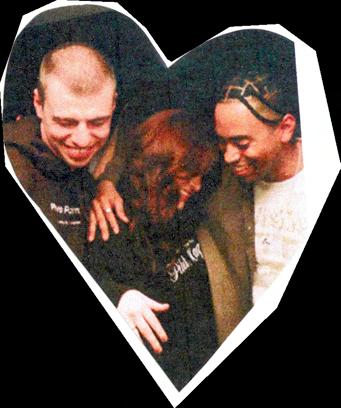

Communities are the gateway to so much more than companionship – young people use them to form deep, value-driven connections. Community is also the nascent means of sharing, expressing, and engaging, marking a departure from conventional modes of communication. Finally, and crucially, they’re a vehicle to help this generation to exist in the world and remould it to better fit their identities, needs, and ambitions.

This demographic is not only redefining the way connections are formed, but also how influence and brand engagement are both executed and perceived.
This shift necessitates a new approach from brands, one that goes beyond the typical marketing playbook and celebrates all the nuances and tonal quirks of this complex but creative generation.
Understanding how to integrate into these dynamic communities is imperative to staying relevant and resonant in the shifting sands of identity, media, and culture at large.
As we discussed previously, nuance is essential to Gen Z, so – no major shock – working with them requires a nuanced understanding of influence. It’s no longer just about reaching an audience and holding their attention, but rather engaging with them in ways that acknowledge and respect the intricacies of their identities, values and means of communication.
Communities often function as brands in their own right, complete with distinct missions, cultures and fandoms.








These communities hold the keys to new audiences and grant brands the opportunity to build credibility and clout. This extended influence means that engaging with a community can amplify a brand’s presence, extending well beyond numbers in a spreadsheet into broader cultural conversations and networks.
The rise of Gen Z communities is a call to action for brands.
Similar to the creator revolution in the late aughts, the same seismic shift of influence is taking place under our noses in communities across the UK. It wasn’t until creators started amassing audiences on Instagram that a large swathe of the industry took notice. By this point, they’d missed nearly a decade of opportunity for creator partnerships on YouTube. This time around, brands have a chance to show up early. And by show up, we mean so much more than being present. It’s about instigating a richer form of engagement that values genuine connection and cultural exchange.

The challenge for brands in this era is profound, yet filled with potential. Traditional marketing methods fall short when it comes to the dynamics and needs of Gen Z communities. This calls for a commitment to create and nurture relationships long-term, going deeper than with previous generations. For brands willing to listen, adapt, and collaborate, this new era presents an unparalleled opportunity to create lasting relationships and make a genuine difference to the lives of this influential demographic.
The era of mere spotlighting is over – and for so many reasons.
True engagement requires tangible support and collaboration – providing resources, investment, space, education or platforms. Your approach must focus on creating value-rich, intentional exchanges. Just as communities need (and create) an exchange of value between members, so too do brand – community relationships.
“Members of the community [have to] get something out of it, because if not, it’s just a brand or a cult.”
Moreover, as we explored in our chapter on authenticity (go ahead, flip back if you need to), communities are eager for brands to be bolder in what they bring to the table creatively. To paraphrase Alana from Pilot Mag, don’t pretend you’re not there! Winning partnerships will come from matching the imaginative spirit of the communities you work with.





Communities should never just be a campaign asset. They are living networks of cultural influence, understanding and expertise. The brands that really get it right know that communities are de facto cultural advisors and treat them accordingly. We mentioned earlier that many of them see themselves as brands in their own right. They know who they are and know how to build a brand – after all, they’ve created their own – so it’s helpful to treat your interactions with them as you would a partnership with any other brand.
With that mindset then, bring them in as early as you can and keep them involved throughout. It’s exactly what we did for this year’s What Matters To Us. What did that look like? We kicked off our partnership by holding an IRL immersion session with community leads to define the brief, we handed over the creative reins to each community and encouraged them to create much of the content themselves, and we grouped everyone together in a chat to encourage discussion and exchange of ideas – to list but a few things.
This approach involves building flexibility into partnerships and over-communicating to ensure there’s no crossed wires between corporate and community worlds. Transparency about brand objectives, language, and internal process is essential.
In other words... ABAQ – Always Be Asking Questions!

We’ve held off unleashing the V word until now. But vibes are vital. Aligning with communities is not about sponsorship, it’s about embodying allyship. This means only working with communities that truly resonate with a brand’s core values and narrative. Basically, it’s gotta make sense – Gen Z’s bullshit radar is sophisticated stuff.
This means brands need to look inward, with honesty, to identify where their sweet spots lie. A little help from a certain culturally tapped-in creative agency couldn’t hurt either. Tip: Don’t get too bogged down in what part of culture is a good fit. Start with your brand values, your lore, and your culture and see where they lead you.
Every community has its unique strengths and limitations. Brands need to tailor their approaches to these specific dynamics, carefully considering what they need from a collaboration before deciding who to partner with. Expecting all communities to be alike, equally capable, and organised will more than likely lead to bumps in the road.
It’s worth preparing to build in flexibility on timing and delivery. As mentioned, this age group has 9 to 5s and 5 to 9s to tick off – the majority of communities are run by folks in their own free time. If you’re not sure, refer back to point 2: ABAQ!

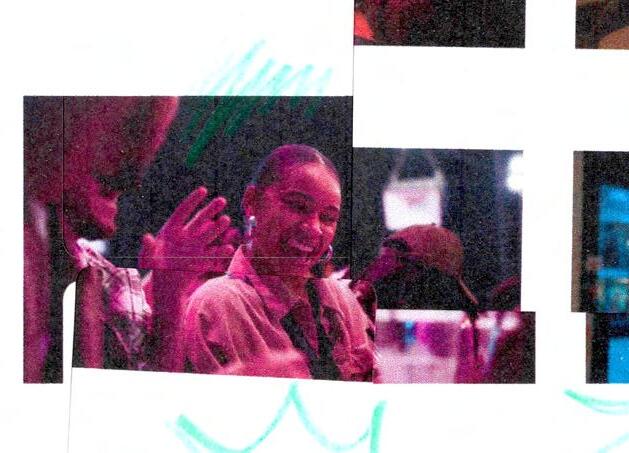

Fundamentally, the most important rule is to ground your partnership in respect and curiosity.
Working with a community, more often than not, means entering into a lovingly created and carefully maintained safe space – something almost all of our partners highlighted when asked what community meant to them. Brands must understand and respect the sanctity of these safe spaces, so aim to devise a sensitive approach and commit to positive contribution.
This doesn’t mean having zero KPIs and tiptoeing around objectives but rather baking in assurances and checkpoints that keep the relationship true to the culture of the community – some kind of Key Relationship Indicators.
And remember, communities are interconnected organic networks of influence and trust – in other words, people talk. Brands that don’t prioritise kindness and curiosity risk a reputational fall-out that extends far beyond the parameters of any one given activation. While on the other hand, a positive experience could sow the seeds of the kind of seismic sentiment shift that only a meaningful cultural exchange can achieve.

Working with Gen Z communities presents an opportunity for brands to connect meaningfully with increasingly hard to reach groups and to contribute positively to the cultural and social landscape. By building respectful partnerships, brands create the kind of impact that will resonate with today’s youth and help shape this new era of community-centric connection.
Louise Millar: Strategy Director
Joel Menegazzo: Creative Director
Jasmine Roberts: Research and Insights Director
Ed Lloyd: Creative Strategist
Luke Seymour: Account Manager
Eli-Aine Mckenzie: Senior Account Executive
Rebecca Hobbs: Global Head of Brand and Marketing
Moving image and design:
Monty Wilson: Videographer and Editor
Abekshan Sabesan: Brand Content Editor
Pulsar Studios: Graphic Designer
Big thanks to:
The extended Seed and Amplify team particularly: Lucy Trott, Fayola Douglas, Kate Boekhorst, Derrick Samula, Monica Saveska, Zlata Pchenitchnaia, Jess Powell, Abigail King, Anna Zakis.
Jonathan Emmins, Founder + Global CEO, Amplify for his faith and championing of the project.
Finlay Walker for capturing footage up north.
Eyram Dzotsi and his delicious food @gardenofafruika for keeping us happy and fed with his incredible plant-based Afruikan and Caribbean dishes.
The very accommodating shoot locations: Peter Quine, Stormont House Special School, Pembury Tavern, Colour Factory, The Shacklewell Arms, Hidden MCR, MagCulture, Motel Studios, Halo
And many others for their support, contacts, namedrops and friendship: Seun Areoye and Yusuf Ntahilaja
Communities
Black Girl Gamers
Jay-Ann Lopez
Bugeisha Club
Mana Kimura-Anderson
April Gunawardena
Akiko Haruna
Bekky Tun Pe
Lara Swift
DR3
George Howard
Ranaik Purewal
Indy Gill
EOTT
Morgan Lethbridge (Levvy)
Isaac Quine
Somerset Charles
Elliot Griffin
Sam Pitt
Hellaa Melanin
Niamh Fitzmaurice
Charon Cummins
Hells Bells FC
Ro Supper
Sarah Bourdin
Jossie Evans
Ellen Pentony
Mhari Sellström
Peng Femme Jam
Laura Spencer
Winnie Sandy
Pilot Magazine
Dagny Tepper
Alana Foster



